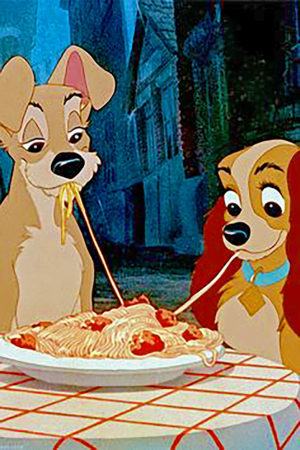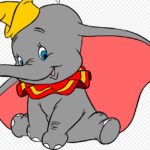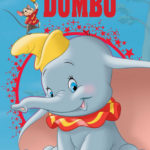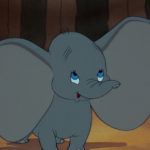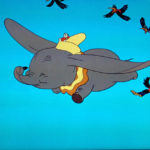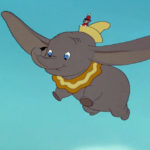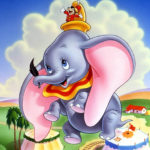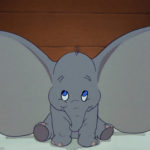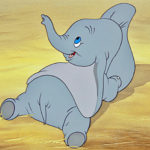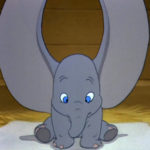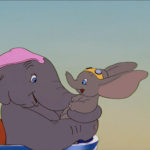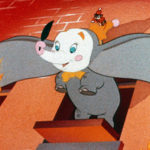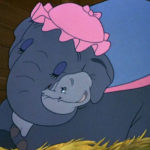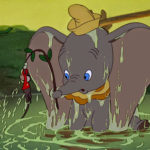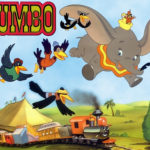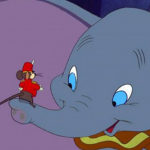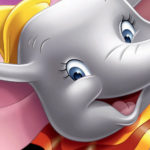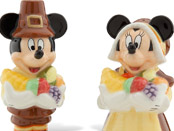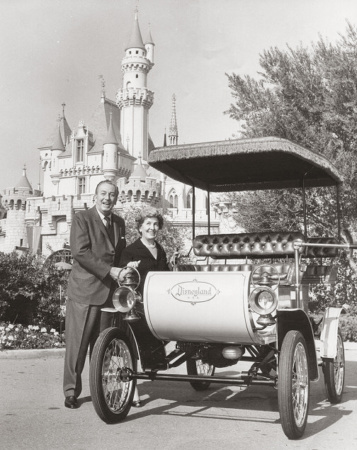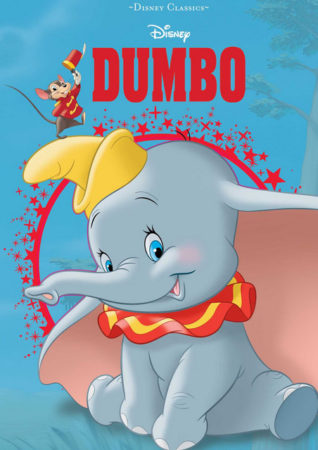
Walt Disney’s 1941 “Dumbo”…
Here is the first Disney Classic that has been rebooted from animation to live actors, and photo-realistically computer generated images. Following this re-imagined film was Disney’s “Aladdin” premiering on May 24th, the “Lion King”, opening on June 6th in Hollywood, and the classic “Lady and the Tramp” which debuted on November 12th of this year. These “Reboots” if you will, are done in classic Disney fashion, beautiful scenery, talented actors and a Walt approved storyline. Walt always wanted to stay away from sequels, or remakes. His philosophy was “Been there, done that” and wanted to move on to newer material.
Although the Disney Company is for the most part, still guided by Walt Disney’s principals and ideas, it is their motivation to bring these classics into a more “Modern” format for the new generation of kids and new fans. On a personal note, I am a true traditionalist. I do love the advancement of CG graphics and modern techniques in today’s film industry, but the warmth and beauty of classic hand-drawn cel animation and backgrounds cannot be matched by any other technique. All four reboots have been commercial bonanzas and received high praises. Some criticism stems from deviations of the stories from the original. So here is the earliest Dumbo and we will look at its original storyline and background of this, one of Walt’s classic animated feature films…
Dumbo is the fourth animated feature film in the Disney Dynasty. As with most Disney films, it is based on another story, or book. In this case, a book written by Helen Aberson and her husband Harold Pearl, who did the illustrations. The story team of Joe Grant and Dick Huemer adapted it for the screen. Aberson professed that she alone wrote the story, and her husband was the lone illustrator, but after their divorce, Pearl claimed he co-wrote the book. The original story emerged as a prototype called a Roll-A-Book. A Roll-A-Book was a unique presentation. It contained about a dozen illustrations or so with text that appeared on a short scroll in a box and the reader would twist a wheel at the top to get to the next panel illustration in the screen.
Despite the huge success of Snow White and the Seven Dwarfs in 1937, Pinocchio, February 7th release and Fantasia, November 13th, 1940 did not garner the box office receipts as Snow White. It was not that the films were bad, they did get good reviews, but this was in the middle of the Animators strike and War clouds over Europe limited overseas markets. It was a rough time at the Studio. Note…Although the Reluctant Dragon was released on June 20, 1941, many do not consider it a full-length feature. It was essentially a tour of the new Studio, and most of the film is live action. There is only 40 minutes of animation.
Here is the storyline that Walt and his team adapted…The film opens with a flock of storks delivering babies to a variety of circus animals. They descend upon the State of Florida where the circus is wintering. and drop off their babies. The elephant, Mrs. Jumbo watches as many animals get their babies, but none are delivered to her. As the circus train is loaded up for the trip north to begin the season, an exhausted stork finally brings finally finds the train and delivers Mrs. Jumbo her baby boy. For you sharp-eyed viewers, observe the name of the circus on the white building as the train departs. The blue and pink sign reads “WDP Circus”, for Walt Disney Productions. Walt was referencing the Ringling’s Bros circus who also wintered in central Florida, so his circus is here also.
When the baby is first presented to the other elephants, the stork asks Mrs. Jumbo the baby’s name. She replies, Jumbo Jr. The other elephants first are enamored by Jumbo until his huge ears flop out after a sneeze. The lady elephants laugh and make fun of him and his ears, giving him the moniker “Dumbo”. After the circus arrives at their opening destination, a group of kids tease and make fun of Dumbo and his ears. When Mrs. Jumbo tries to protect him, a riot ensues and she is locked up as a mad elephant.
When a small circus mouse, later we learn his name is Timothy, sees the other elephants’ giving Dumbo the “Cold Shoulder”, he decides to befriend Dumbo and help him out. This relationship lampoons the orthodox hostility between elephants and mice. After convincing Dumbo, he is a friend, he concocts a plan to make him famous. When the ringmaster is asleep, Timothy whispers to him for to set up an act of a “Pyramid of Pachyderms” where Dumbo will jump on using a springboard. When the act is tried out, Dumbo fails because of his large ears, the big top is destroyed, all the other elephants get injured and the circus has to move. The ringmaster reduces Dumbo to an assistant clown.
In this act, Dumbo has to fall from a high platform into a vat of pie filling, aping being saved in a building fire. The act is successful, so all the other clowns, flushed with success, get drunk and decided the higher the platform, the better the act and they might get a raise. Dumbo and Timothy visit Mrs. Dumbo in her cell and the reunion is emotional. Dumbo couldn’t stop crying, so they both get a drink of water from the clown’s tent. They didn’t know the water was loaded with champagne by the clowns, and they become intoxicated, and both observe a large group of Pink elephants dancing and singing. This heralds in the famous “Pink Elephants on Parade” sequence. Joe Grant and Dick Huemer penned lyrics for a dream series named the “Pink Elephant Polka”. This most likely gave rise to the song used in the movie, “Pink Elephants on Parade”, written by Oliver Wallace with lyrics by Ned Washington.
When they awake, they find themselves 100 feet up in a tree. A gang of crows wakes them up, and the leader wants to know what they are doing up in their tree. At first Timothy is confused, but concludes that Dumbo flew them up the tree when drunk. The crows found that idea hysterical. Timothy tells Dumbo of the story, and persuades him with the help of a “magic feather” and assistance from the crows, Dumbo begins to fly.
At his next performance, Timothy convinces Dumbo to fly out of the burning building, but he loses the feather, as they are falling Timothy tells Dumbo he can fly without the feather and at the last minute, he opens his ears and soars around the big top to the cheers of the crowds. After the performance, the papers proclaim, “Elephant flies!” and “Ears insured for a million dollars!’ and Dumbo’s manager Timothy signing a Hollywood contract. We see the Casey Junior circus train traveling to the next show, pulling a private train car with Mrs. Jumbo waving to Dumbo flying behind. Dumbo is now a circus hero.
Differences between the Film and Book
In the story, Mrs. Jumbo was named Ella. She was not locked up after the bullies taunted Dumbo. A man Jack announced the pachyderm pyramid, not the ringmaster. There was no Timothy Mouse, but Red the Robin. A Professor Hoot Owl, not the crows, taught him to fly. Ella gave her baby the name Jumbo, not Jumbo Jr. The lady elephants applauded his big ears. Jack and the ringmaster tossed Jumbo in a donkey car, and on his water pail, erased the J for a D for Dumbo. Also Dumbo speaks in the book, not the film. Also in Aberson’s story, Dumbo is not a baby but a midget whose ears were very pink and extra big. His solo performance, he falls off a box trying to balance a ball on his trunk.
The story was first (supposedly) proposed to Walt by John Rose who worked in the story department. After some negotiations, Walt bought the rights to the story from the President of Roll-a-Book, Fred O’Hara on June 14th, 1939. The contract is recorded with the Copyright Office on April 28, 1940. Dumbo is the shortest length of Disney features at 64 minutes. Disney’s distributor at the time, RKO balked at the time; they wanted another 15 minutes run time, Walt refused. They then asked to shorten the film for a featurette, again Walt refused. Lastly, they asked it to be released as a “B” film to run with another movie, but Walt refused. “You can stretch a story just so far and after that it won’t hold together.” Walt said. He was right, and the film was successful coming in ahead of schedule and under budget. Dumbo initially cost $813,000.00, but recouped $2.5 million. The film received massive accolades from the press. The film was so popular that Time magazine proposed to feature Dumbo as the “Mammal of the Year” in place of its annual “Man of the Year” on December 29th issue. But after Pearl Harbor and the countries entry into WWII, the idea was scrapped.
Dumbo took only a year and a half to produce. Walt knew just what he wanted. It is one of the few films supervised by Walt that went from start to finish with few changes or alterations. And in keeping with Walt’s persistence on accuracy and believability, much like the future Bambi, the Disney artists visited the Cole Brothers Circus for an authentic feel of the genre, and a live stork and elephant was brought to the studios, as the deer in Bambi for the artists to sketch.
To stem costs, director Ben Sharpsteen was told keep the film simple. Because of this, Dumbo is well short of the copious details of the backgrounds, characters and less number of cels used for animation. This bucks the previous animated features of Snow White, Pinocchio and Fantasia. Watercolor paint was used to provide the backgrounds as a cost-cutter. Dumbo and Snow White are the only two Disney features to use the technique, a technique regularly retained for the Disney animated shorts. The other Disney features used oil paint and gouache. Despite the cost cutting, Bill Tytla’s animation of Dumbo is considered an epic of American traditional animation. Tytla is also noted for his animation of the Seven Dwarfs in Snow White, Stromboli in Pinocchio, Yen Sid and Chernabog in The Sorcerer’s Apprentice and A Night on Bald Mountain/Ave Maria sequences from Fantasia and the title character in Dumbo. He is also known as the creator of Little Audrey cartoons. This simplicity allowed the animators to focus on the acting of the characters.
The voice cast for the film is as follows… Edward Brophy as Timothy Q. Mouse, Verna Felton as the Elephant Matriarch, and Mrs. Jumbo, Dumbo’s mother, who speaks only once in the film to give Dumbo’s name, Cliff Edwards as the Dandy Crow, the leader of a group of crows, Herman Bing as The Ringmaster, Dumbo’s main antagonist, Margaret Wright as Casey Junior, the circus train, Sterling Holloway as Mr. Stork, The Hall Johnson Choir as the Crow Chorus, James Baskett as Fats Crow, The King’s Men singing quartet as the Roustabout Chorus, Noreen Gammill as Elephant Catty, Dorothy Scott as Elephant Giddy, Sarah Selby as Elephant Prissy, Malcolm Hutton as Skinny, Billy Bletcher as the Clown and John McLeish as the narrator of the film.
Dumbo won the 1941 Academy Award for Original Music Score, given to musical directors Frank Churchill & Oliver Wallace. Lyricist Ned Washington and Churchill were nominated for Best Song, Baby Mine. The film also won Best Animation Design at the 1947 Cannes Film Festival. The simple story, heartwarming scenes of love between Mrs. Jumbo and Dumbo and its charm had made Dumbo one of Walt’s favorites and cherished films made. Only the fans will determine if the original pales or supersedes the remake.
